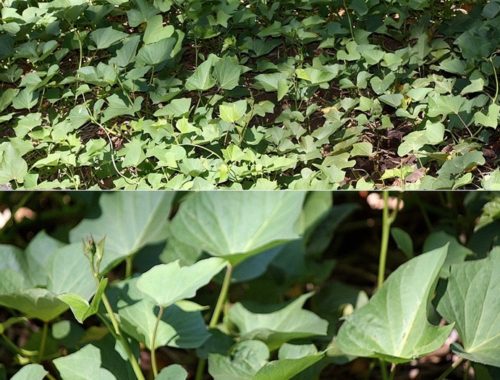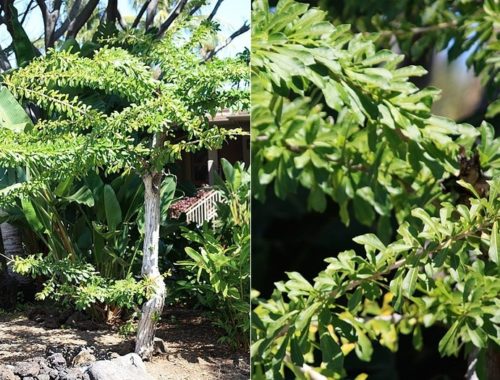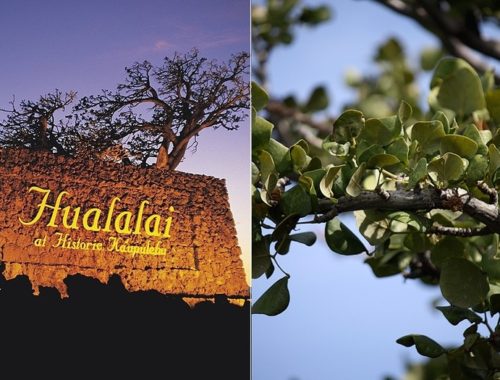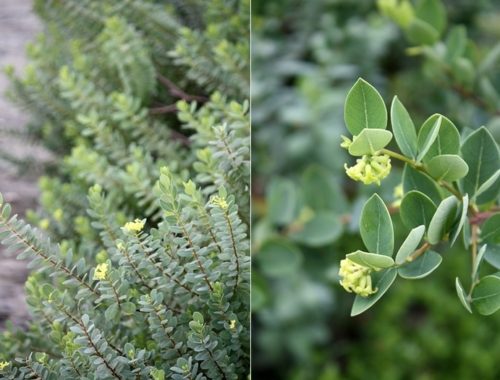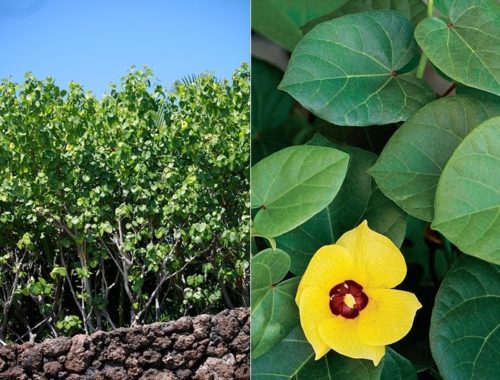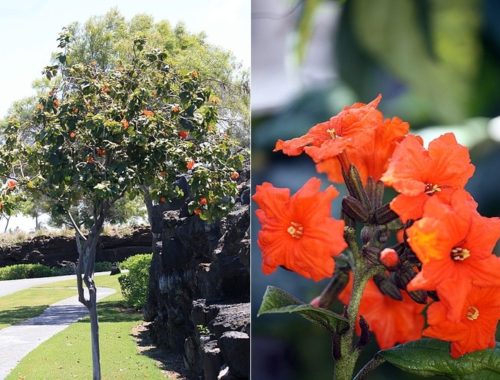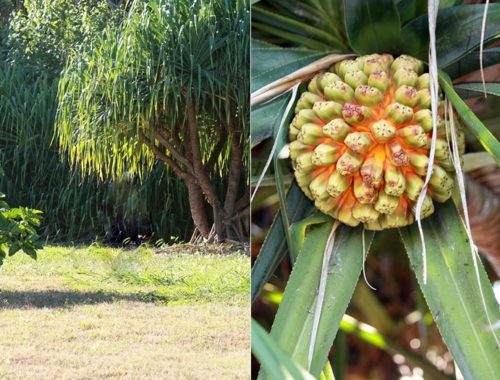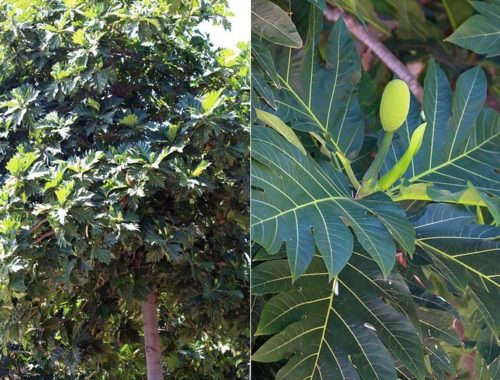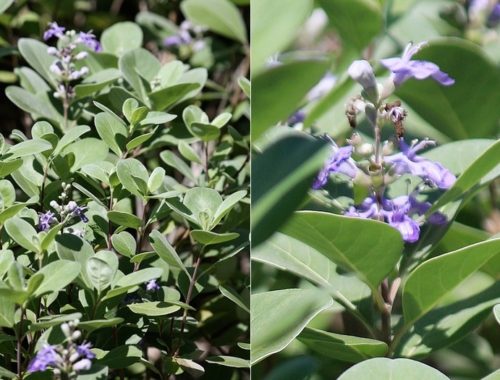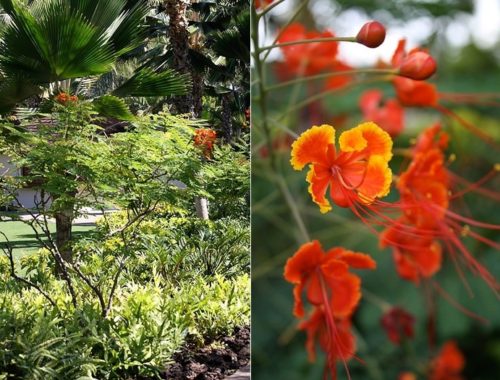Plants of Ka‘ūpūlehu
The wao kanaka is the realm of human activity, the region most valuable and accessible to humans, where sturdy materials were grown, harvested, and fashioned into the substances of everyday living. ‘Uala (sweet potato) was planted wherever a tiny mound of soil could be formed throughout the dry lava coast of North Kona. Hala were woven into mats, bags and hats. Hardy koa were carved into canoes, utensils and spears. ‘Ulu (breadfruit), kalo (taro), and hau were also planted. In this world, plants were valued to sustain life.
Food plant, all parts are edible if thoroughly cooked. Most common food is poi made from mashing the baked corm and mixing with water.
Located next to the Culteral Center and Herb Garden.
Food plant, tuber is more frequently consumed however, tops were also cooked and eaten.
Located next to the Cultural Center.
Not edible. The fruits were dried and used as containers and were also filled with ali‘ipoe seeds and used as hula rattles.
Located in garden next to the Cultural Center and lower lobby.
Not edible. The wood was light weight and used for surfboards, outriggers for canoes and net floats. The seeds are often strung into lei.
Located at entry and at the three-way stop.
Bark is an excellent source of fiber. Roots, bark and leaves were pounded and placed in salt water pools to help catch fish by narcotizing them.
Located next to Hōkū Amphitheater.
Not edible. Flowers used as a laxative. Wood used for outriggers for canoes and cross sticks of kites, also for making fire. Inner bark was used for making cordage.
Located around Waiakauhi Pond
Kou played an important part in the life of the early Hawaiians, from its soft but lasting wood were made cups, dishes and calabash. The wood was beautifully grained with dark and light wavy lines. In Tuamotuan legend it is believed to be one of the first trees created.
Located in front of the Golf Pro Shop.
The aerial root of the hala tree (ule hala) was used medicinally both internally and externally. The flower of the male hala tree (hinano) was used for perfume, medicine and as an aphrodisiac. Lauhala is the leaf of the hala tree which was used for weaving mats, hats, canoe sails and containers to name a few. According to a Melanesian myth the hala brought about the creation of mankind.
Located throughout the property and across from the Cultural Center.
The fruit from the ulu was used for food and a poultice for wounds, cuts and sores which came from the sap or gum of the tree. The leaf was used as a kite for fishing and to wrap food for cooking. The gum of the tree was also used for caulking the canoes. An inferior kapa or tapa can be made from the inner bark. In Tahitian myth, the breadfruit was the gift of a loving father that during a time of famine, planted himself in order to feed his family.
Located in the herb garden and Cultural Center.
Pōhinahin is an aromatic shrub with purple-blue flowers that grows low to the ground. The leaves were used to scent kapa and could be spread under a sleeping mat for softness and aroma.
Located in front of the Cultural Center and on the main road of the resort.
‘Ohai ali’i is a beautiful flowering shrub or small tree. It’s flowers are prized for lei making. The seeds can be cooked and eaten. Another use of the seed is a dye of yellow and black.
Located along the path in front of Hōkū Amphitheater and Garden Lawn.
Looking to the Future
Hualālai Resort continues to strive for excellence by providing impeccable service with the spirit of aloha. As we look toward the future, our goal to to exceed all expectations with kind service and graciousness will be our foundation that our guests and community receive.

